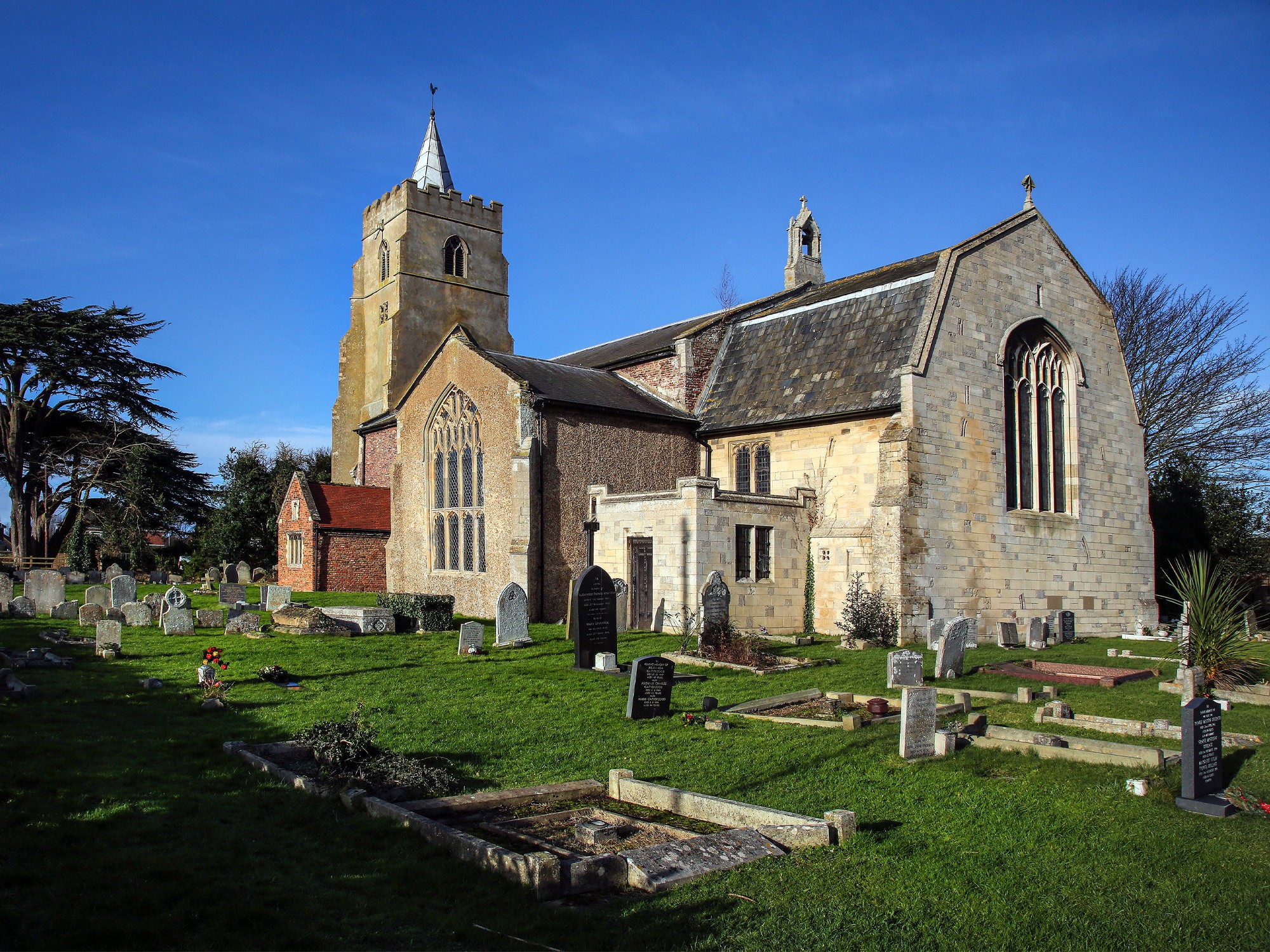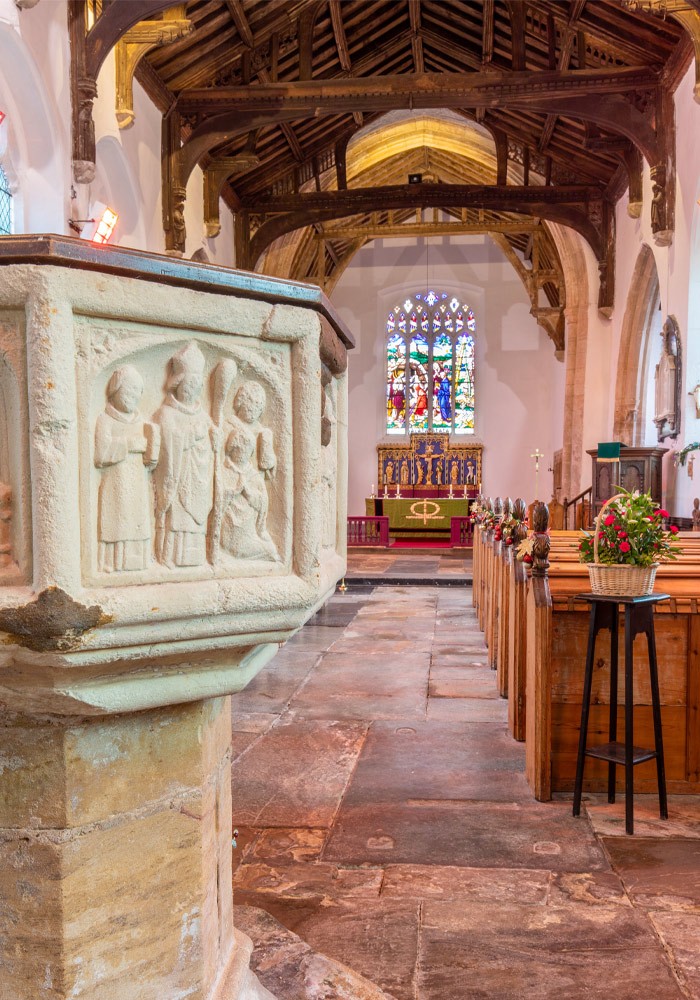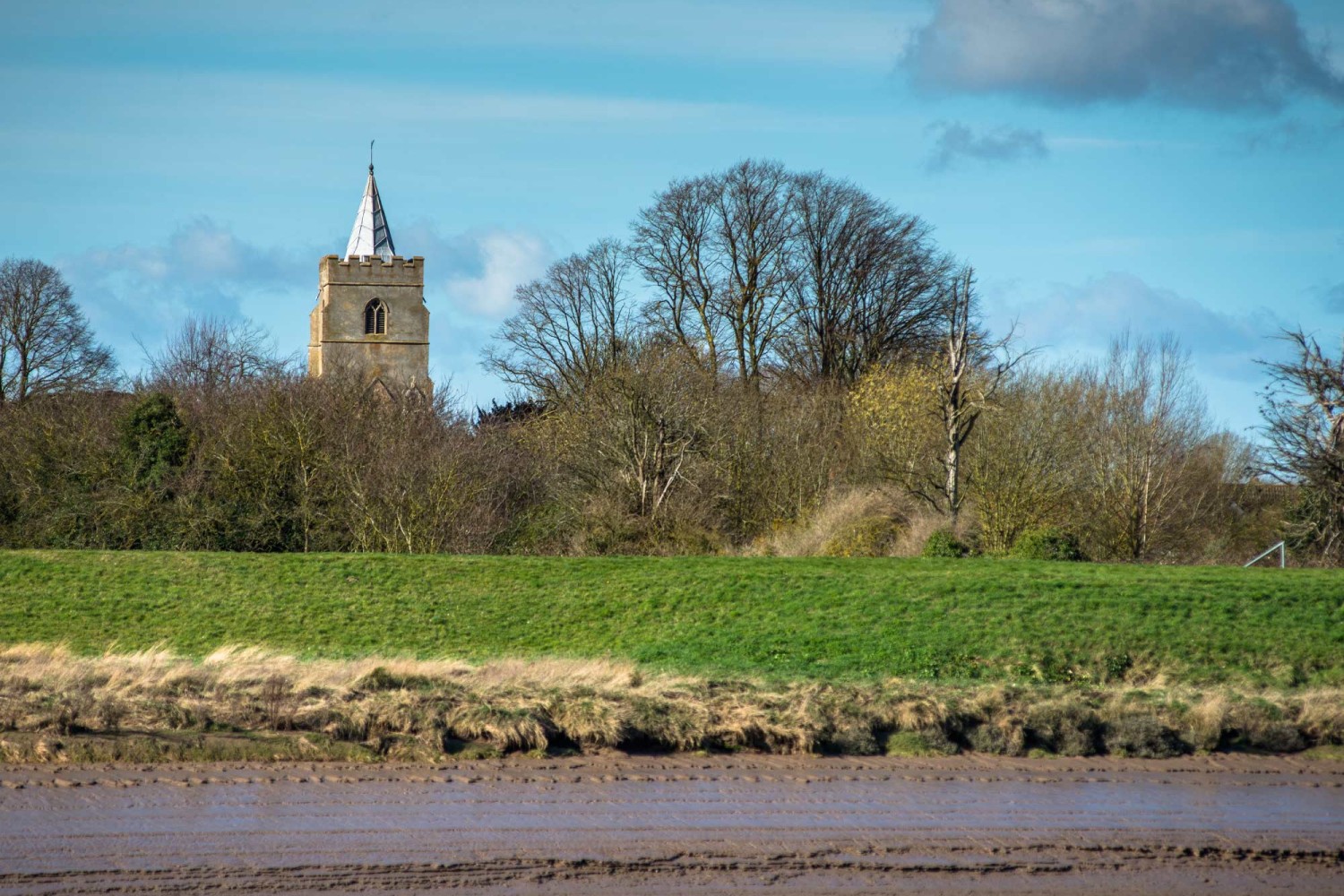
West Lynn’s hidden wonder
Norfolk has the largest concentration of medieval churches in the world, and the one in West Lynn is among the most astounding of them all
Standing silently across the river from King’s Lynn and the dominating outline of St Margaret’s, St Peter’s Church in West Lynn is perhaps one of Norfolk’s least known historic treasures. It’s a striking building with a remarkable past and a wealth of fascinating wonders hidden within its walls.
The parish church has Norman roots and originally stood closer to the river but it was rebuilt further inland in 1271 due to the impact of flooding. Constructed in the Decorated Gothic style, typical of the 13th and 14th centuries, the building’s elegant square tower is contemporary with the present structure. With its cusped and traceried belfry windows and later leaded spire, it stands out as a prominent landmark from across King’s Lynn’s South Quay.
The church has a very wide nave, dating from the 15th century, awarding it an impressively bright and spacious interior. At its western end stands a fine example of a seven sacrament octagonal font worked in soft stone, which has splendidly endured the wear of the centuries.
Such fonts are the great glory of East Anglia’s late medieval churches and there are thought to be only 40 in the entire country - 38 of which are in Norfolk and Suffolk. Their purpose was to reinforce Catholic orthodoxy by illustrating the importance of all seven sacraments, refuting the Lollard heretics who insisted only two were necessary.
Before the 16th century, most church fonts were covered with elaborate wooden lids and locked to protect the baptismal water. At West Lynn, the cover is said to have been crudely smashed during the Reformation, and many of the carved panels were also viciously scratched at this time. Thankfully, this mutilation hasn’t obscured the depiction of the seven sacraments or the Holy Trinity, which is represented on the eighth panel.
The nave retains its original medieval roof, a spectacular structure with exquisitely carved figures of the apostles at the wall posts. 12 of the 14 figures hold distinctive emblems, and high in the roof itself appear stunning wooden angels bearing shields with various symbols.
“It’s one of the finest features of the church and a true wonder to behold,” says Rector Fr Adrian Ling. “The figures likely avoided the destructive forces of the Reformation because they were simply too high for reformers to get at. They’ve survived in remarkably good condition and are very special indeed.”
Another rare treasure is the splendid memorial brass below the entrance to the chancel, dated at 1503. It depicts Adam Outlaw, an earlier Rector, who left a house and two ferry franchises to the church in return for prayers for his soul.
The chancel was rebuilt in 1934, making it one of the last expressions of the Gothic Revival in Norfolk. The previous structure collapsed and its arch remained walled over until the £1,800 replacement vastly improved the appearance of the church.
The present chancel incorporates pieces of Norman stonework discovered when digging its foundations, indicating remains of the original parish church were reused in the building of 1271. Fragments from a 17th century cannon were also unearthed in the churchyard, which is thought to have been used as a battery by Cromwell’s forces during the siege of royalist King’s Lynn in 1643.
The chancel features a truly magnificent stained glass window, dating from 1849, which was carefully moved from the blocked arch and replaced in the later building. A glorious depiction of the three Marys at Christ’s empty tomb on Easter Day, the vibrant masterpiece was created by William Jay Bolton as a memorial to Amelia Walker of North Lynn.
Bolton was involved in the restoration of the stained glass at King’s College Chapel in Cambridge and, though born in Somerset, he’s best known for his work at the Church of the Holy Trinity in Brooklyn, New York. A skilled designer with an eye for detail, he’s renowned for crafting the first figural stained glass window made in the United States. Upon returning to England in the late 1840s, Bolton married a woman from King’s Lynn and went on to design the window at St Peter’s. It’s his only substantial work in Britain and one of the earliest stained glass memorial windows in this country.

“In Norfolk we’re blessed with an incredible array of medieval churches and it’s fair to say that St Peter’s is among the most amazing of them all,” says Fr Adrian. “It’s a beautiful building bursting with history, and we’re keen to start sharing it’s wonders with others.”
In recent years the church has only been open for services, but exciting plans are underway to make it available for visitors to admire on a daily basis. “The challenge with historic buildings is that they require a great deal of care and attention,” says Fr Adrian. “The roof of St Peter’s hasn’t been touched since the rebuilding of the chancel in the 1930s; many of the slates are slipping and it needs to be replaced.”
“We also want to enhance the church with facilities so that it can host more community events,” he continues. “It’s been hidden away for far too long, so we’re pouring a great deal of effort and enthusiasm into giving it a bright future.”
Donations to help preserve this fascinating church would be greatly appreciated. Please contact Fr Adrian at AdrianRLing@btinternet.com. For further details about St Peter’s see: www.southandwestlynn.org.uk

